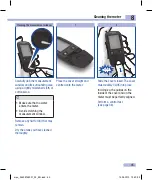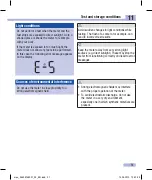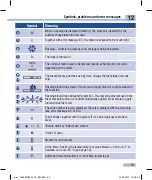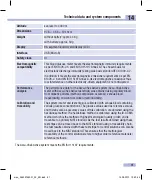
50
Test and storage conditions
11
Temperature
• For blood glucose tests and control tests the
temperature must be b8 and
+42 °C.
• If the temperature is at the limits of the
permitted range (b5 and +8 °C or
b42 and +45 °C), the meter still
allows you to perform a test. The
thermometer symbol will, however, be
displayed (see also page 53).
• Tests cannot be performed at temperatures
below +5 °C and above +45 °C. In this case
the following appears on the display:
• Keep the meter without battery at a
temperature between ‑25 and +70 °C.
• Keep the meter with battery at a temperature
between ‑20 and +50 °C.
W
• Do not use test results obtained at the limits of
the permitted temperature range as a basis for
making therapeutic decisions. These test
results could be incorrect. Incorrect results
can cause the wrong therapy recommendation
to be made and so produce serious adverse
health effects.
• Never try to speed up warming or cooling of
the meter, e.g. in a refrigerator or on a
radiator.
H
• At temperatures above +50 °C the battery
could leak and damage the meter.
• At temperatures below ‑20 °C the battery
does not have enough power to keep the
internal clock functioning.
Test and storage conditions
So that the meter works reliably and you obtain accurate test results, make sure that the following
conditions are met.
W
Sudden changes in temperature cause
condensation to form in or on the meter. If this
has occurred, do not turn the meter on. Let the
meter slowly cool down or warm up at ambient
temperature. Never keep the meter in a
moisture‑prone area (e.g. a bathroom).
Atmospheric humidity
Only perform blood glucose tests and control
tests when relative atmospheric humidity is
below 85 %.
Keep the meter below 93 % relative
atmospheric humidity.
man_06658768001_02_EN.indb 50
14.08.2013 10:20:27



































